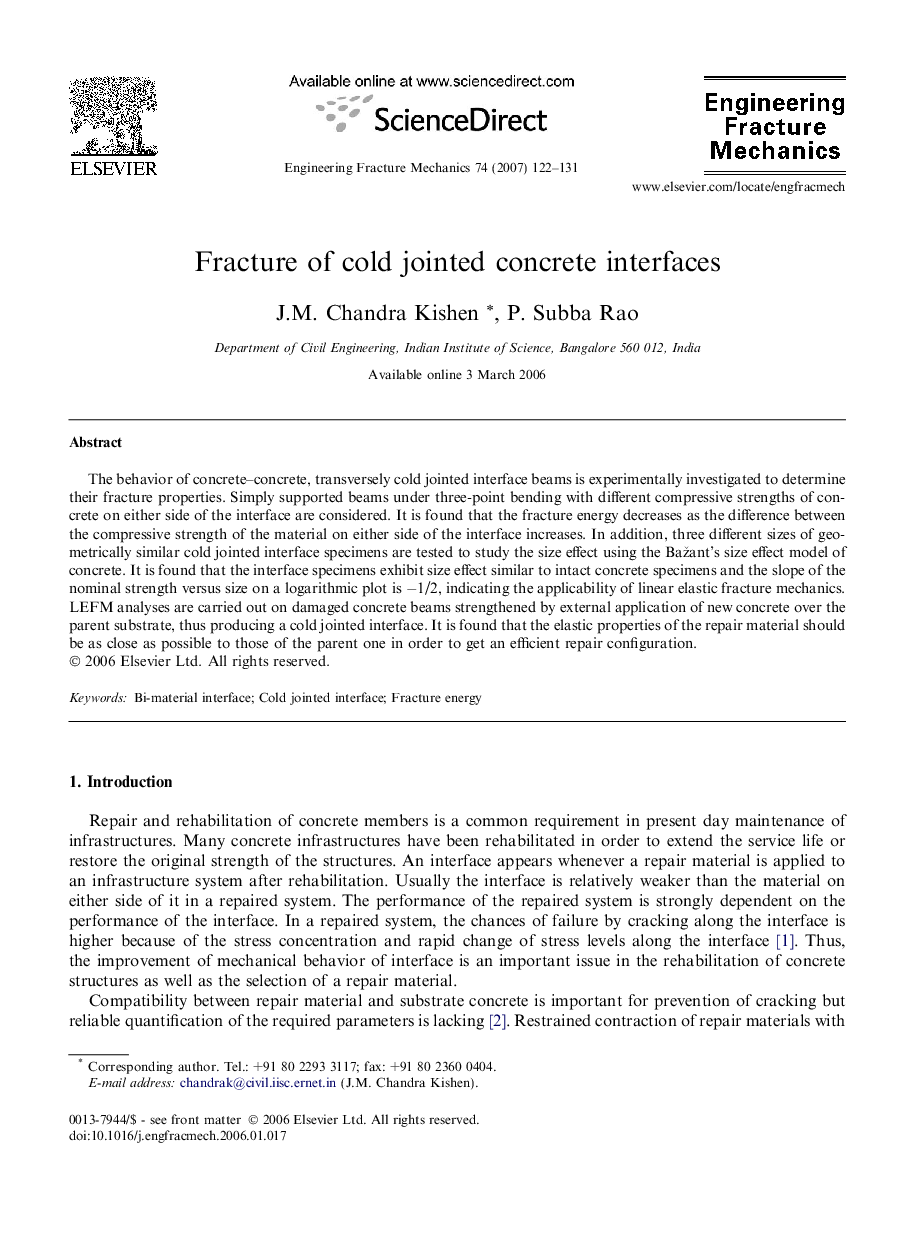| Article ID | Journal | Published Year | Pages | File Type |
|---|---|---|---|---|
| 775898 | Engineering Fracture Mechanics | 2007 | 10 Pages |
The behavior of concrete–concrete, transversely cold jointed interface beams is experimentally investigated to determine their fracture properties. Simply supported beams under three-point bending with different compressive strengths of concrete on either side of the interface are considered. It is found that the fracture energy decreases as the difference between the compressive strength of the material on either side of the interface increases. In addition, three different sizes of geometrically similar cold jointed interface specimens are tested to study the size effect using the Bažant’s size effect model of concrete. It is found that the interface specimens exhibit size effect similar to intact concrete specimens and the slope of the nominal strength versus size on a logarithmic plot is −1/2, indicating the applicability of linear elastic fracture mechanics. LEFM analyses are carried out on damaged concrete beams strengthened by external application of new concrete over the parent substrate, thus producing a cold jointed interface. It is found that the elastic properties of the repair material should be as close as possible to those of the parent one in order to get an efficient repair configuration.
